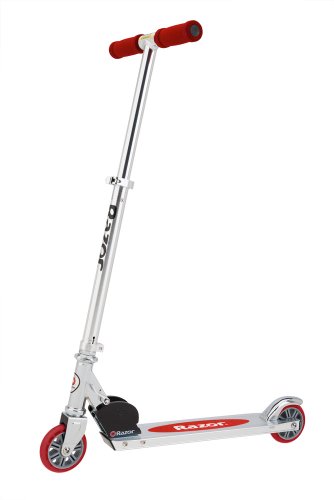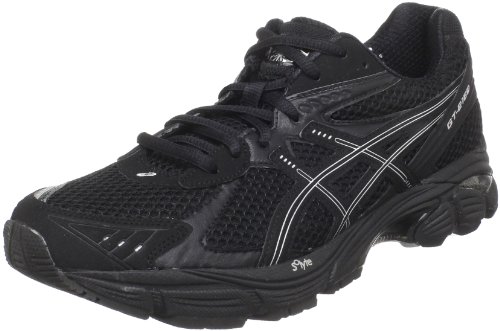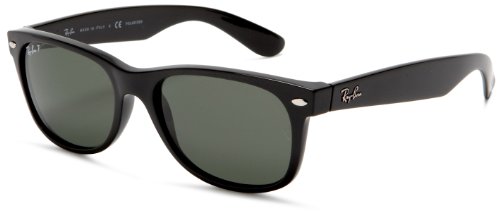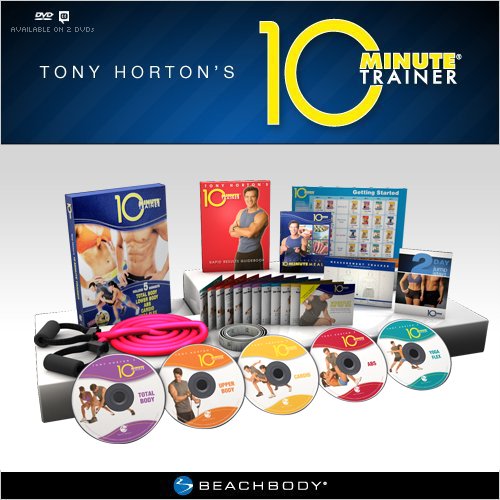Q: How did you start in physical theatre?
A: When I was a teenager I was very lucky to have worked with Dan Hurlin who is a phenomenal performance artist, writer and teacher. We didn't talk about the work as a genre like 'physical theatre' or 'realism' or 'absurdism' we just worked very physically. He taught me that acting was sweaty and theatre didn't have to look like real life. As I got older and found myself wanting more than what my Stanislavsky-based work was giving me, I started searching for other styles that paralleled my work with Dan, which eventually brought me to the Dell' Arte International School of Physical Theatre.
Q: What is physical comedy and what are its distinguishing factors?
A: Physical comedy is telling a comedic story with one's body insteaad of relying on words. Words can be used, but the actor doesn't rely on the words to get the story across. It's slapstick from commedia dell' arte, the old school Jerry Lewis kind of thing. Things need to be big in physical comedy. Most physical comedy these days is seen in cartoons, everything from Tom and Jerry and the Road Runner to the feature films like "Shrek." One of my favorite movies is "The Triplets of Bellville" which is an animated film that came out of Europe a few years ago. There is a little dialogue in the film and the bodies and movements of these cartoon characters are so filled with meaning and visual stimuli in their performance it's amazing. It's an interesting study in how physical theatre or performance works and how you tell stories, physically, as opposed to verbally.
Q: What is Commedia Dell'arte?
A: Commedia Dell'arte is a Renaissance Italian form of theatre and the term means the "comedy of art." It was popular in the 15th and 16th Centuries when troops of actors performed traditional stock characters, mostly in three-quarter mask. The traits of these stock characters were familiar to the audience, the style of acting was improvisatory, but actors didn't start cold as they would in an improv game these days. The gist of each particular scenario was standard, but what exactly transpired was improvised. As these actors had worked together for years and knew each other's work and characters well there was a platform to work on, literally and figuratively. They performed wherever they could gain an audience's attention - whether it was on a platform or wagon. They didn't draw a highbrow audience paying lots of dollars to see them. They had to pull in an audience and then pass a hat to collect coins.
The influences of Commedia are here today. You can see it in The Marx Brothers. You'll even find Commedia's stock characters and plotlines in Shakespeare's comedies such as "Love's Labors Lost." All art forms either change with the times or die off, and in a sense, that's what's happened to Commedia. Very few companies still work in the Commedia style, but I think actors can learn a great deal from working in that style. I'm excited about an advanced Camp Shakespeare at the Shakespeare Theatre Company for teens this summer that I will teach. We'll work with a group of teenagers on improvisation, mask, and physical comedy and create a Commedia play.
Q: What distinguishes Commedia Dell'arte from other forms of performance?
A: Commedia Dell'arte is fifty percent physical and fifty percent verbal. Because it's in mask, it has to be incredibly physical, some of the actors might be tumblers or dancers. Broad physical gestures are integrated with witty speech so that actors aren't standing around talking or expressing their emotions through small gestures.
There was no such thing as a black box theatre during the Renaissance; audience members couldn't watch an actor's deep pain or joy through the actor's eyes. There was no - lights down on the audience and spotlights on the stage. This was the time of lit audiences. Finding ways of amplifying, communicating to the audience, what actors were doing or experiencing was necessary. There were no programs for the audience; they couldn't read in advance that this guy was playing this or that character. The things that we take for granted now didn't exist then.
Performers had to fight to get an audience in the Renaissance. They had to draw them in. If they were performing outside on a wagon, they had to get people's attention, they had to work with the audience. There were 2,000 people in the Globe. It was a very different audience than we have today. People walked around selling oranges and beer and if audiences couldn't hear, see, or understand the actors or story, they could lose interest and their attention. Today it's easy to keep the attention of the audience because there's nothing else to look at. The lights are out and the only place to look is straight ahead. But that wasn't always the case. There were a lot of distractions for the audiences, they were checking out what the royalty was wearing, or who was sitting with whom, or looking for someone to go out with. It was all very social.
Q: What about the stock characters?
A: Stock characters are archetypes - the old miserly man, the crafty servant, the braggart soldier, or the young lovers. They're with us even today - we can see them in the Simpsons" and they've been part of theatre for years. In commedia, each character had traditional costumes, mask, signature props, poses, stances, actions, plot function, relationship to the audience, relationship to other characters. When the audience saw the guy with the long, pointy, droopy nose, wearing tight trousers over skinny legs, they knew it was Pantalone. He was the misery old man of high social status. Arlechinno (Harlequin) was a servant, the spry one always looking for food. Each stock characters had signature lazzis
Q: What are lazzis?
A: Lazzis are the running gags, stunts, and pranks that were performed by the characters. Arlechinno might have a bit about a fly that is bothering him that he tries to catch and eat. It was another way to physicalize and display character to the audience. The stock characters can reach beyond the traditional fourth wall, as we know it.
Q: What do you mean about reaching beyond the fourth wall?
A: Today, while actors understand that the audience is there, the characters, themselves, don't. Realistic drama and realistic acting has a give and take with the audience, but it's subtle. Good actors can sense what's happening in the audience and work that, but it's much more overt in these earlier forms. When film started, and with it the beginning of realism, that distinction wasn't made. Characters then performed with an awareness of the audience. In Shakespeare, it's very clear at certain moments that the character is talking to the audience, and a lot of people believe that it's actually happening even more, it's just not as evident. Several Shakespeare companies take everything to the audience and actors make a lot of eye contact with the audience. Shakespeare and Company in Massachusetts and the American Shakespeare Center in Virginia approach their productions this way.
In clowning, audience contact is crucial. It's a give and take between the audience and the performer in a very direct way. Some people balk at that, like it's the audience participation thing, but it's different - it's not about dragging someone up on stage and making them do stupid things.
There are different worlds of clowning ranging from the traditional circus clown to the existentialist clown like with "Waiting For Godot." Clowns have a sort of resiliency. Tragic things can happen around them, but they bounce back, they are resilient, nothing crushes them for too long. They're not childish or stupid, but there is a naivety to them because the regular logic of our world doesn't necessarily apply. Clowns tend to be very physical and often many of them don't use language at all, so they have a universal form of communication.
Q: Are there skits or are the actors just performing improv?
A: Both, the actors have their clowns' personage that they've developed and they might have an outline of what happens in their skit, scene or production, but how they get from each point can change a lot each time they do it. It's similar to improv theatre today, the same skills are being used - it's about taking in and responding to what's given to you on stage, whether it's from your partner, or the audience, or the chair. Anything can be your partner in clowning, whether it's a human or inanimate object, and you take advantage of that. In regular theatre, if your shoes squeaked, you'd try to figure out a way to diminish it, whereas in clowning, you exploit it. You exploit your own faults in clowning. It's a challenging way to work. The history of clowning is huge and you can find clowns in most cultures. In America, we have a very definite circus clown archetype - the Bozo or the sad hobo clown of the circus - with heavy makeup, floppy shoes and the squirting flower. But clowning doesn't have to be about walking on stilts and juggling. 500 Clowns out of Chicago doesn't wear red noses; they paint their ears red and are sort of scarier looking. Bill Irwin, who is probably the best clown we have in this country, doesn't always work in a red nose. He did when he first started out with the Pickle Circus in San Francisco, and he started developing a theatrical movement that he called New Vaudeville with shows such as The History of Flight and Largely New York, which incorporated much of his clowning expertise and physical comedy.
Q: Why don't we see more of these types of performing now in Washington?
A: There's seems to be a reticence here for different forms of theatre. Street theatre and busking is illegal. In other cities around the world, there are international buskers' festivals, where all sorts of street performers do amazing things.
The growth of Fringe festivals has allowed artists to explore and experiment with different types of performances, and the Festivals allow the audience to experience theatre in ways they hadn't thought of or known about. In this city, people say there's no audience for different kinds of theatre, but I'm not sure that's true. Especially when you look at the success of the Capital Fringe Festival, and companies like Synetic. Other cities seem to foster physical theatre better than this area, but I have hope for DC. Chicago, San Francisco, and Philadelphia are probably the three biggest areas for more physical theatre, including puppetry, mask, clown, and multimedia and everything in between. Some of it's crap and some of it's amazing and a lot of it lies in between - that's great. We want all of that here, too.
Q: Would you talk some about your background and training?
A: I went to undergraduate school in New Mexico State and studied with Mark Medoff, the playwright, who was the head of our program, and I got my MFA from Catholic University in Washington, D.C. While in college, I interned at The Actors Studio in New York. That was before James Lipton and the establishment of the school. Back then, it was just actors in a room attending their American method of acting sessions twice a week. It was during that internship that I figured out that the traditional approach was not for me. That's not to say I didn't appreciate it; there are some brilliant method actors, but I knew I'd never be one of them. All I knew at that point was that method acting and realism were not for me, but I didn't know what was. Luckily, in graduate school I was introduced to a vast array of modern, nontraditional, nonrealism theatre which I really liked.
I was always interested in Shakespeare because it is so big and expressive, and like many people around here, I toured with Shenandoah Shakespeare in Staunton, Virginia. Everybody knows Shakespeare's good, people get that, but before I worked at Shenandoah Shakespeare, I didn't really understand why Shakespeare is so extremely good. When you're speaking those words every day for several years, you find so much more in it. You find out how amazing Shakespeare really is and the Shenandoah Shakespeare style of working, I think, helps illuminate the play and the text for both the actors and audience. But even then, I still knew that there was this whole other world of performance that I wasn't really tapping into.
I later worked in a company in New York called the Collapsable Giraffe which is sort of a devised theatre group or ensemble. We would be in a room, have some inspiration or text and just create. Most of the people there, besides me, had worked or were still working for The Wooster Group in New York, which is a theatre which uses new forms and techniques in producing new and established works. The Collapsable Giraffe and The Wooster Group share a similar esthetic that I find interesting and exciting. From there, I trained at the Dell'arte International School of Physical Theatre in Blue Lake, California, where I was taught clowning, commedia, and overall physical theatre.
Q: What was that training like?
A: It was great, but it was difficult. They were hard on us students and we probably collectively cried more than laughed during training. We laughed too, but we all separately and collectively cried a lot. One teacher was scary. At times, he yelled and threw tennis balls at us while we were on stage - with the best of intentions. He wasn't trying to hurt us - his goal was to keep us in the present and reactive on stage. Some people tried to stay in character and dodge the tennis balls and that made him throw even more balls and yell even louder. As actors, we were so ingrained in our method of acting and training that even in clowning we put blinders on and refused to react to outside things. In clowning, that's really what it's all about. It's being present and taking in what's happening in the space, whether it's in the audience, in the air ducts, or a squeak in your shoe. We all experienced frustration in trying to find that unexplainable place of fully living in that clown personage. We wanted it so badly, and the more we wanted it, the more it seemed to elude us and the more frustrated we got. We didn't speak on stage for months because their belief is that the movement comes first and the voice comes after. Like children, we learn to walk before we learn to talk.
Q: What's so difficult about clowning?
A: Clowning is about going to a very scary place. A lot of people in clowning pick what they find most humiliating about themselves and exploit it. When you really push on those places you avoid, it opens you up to a lot of new and exciting places and freshness. You've got to have a thick skin and be really resilient in clowning. When I started in clowning I thought I was resilient, but in retrospect, I don't know if I really was. This kind of training is not for everybody, but it is very valuable. Mask and clowning skills are incredible tools for traditional modern realist actors to have. Jackie Chan is very clowny and very funny. It's genius how he understands physical comedy in an elevated way in the midst of violence.
Q: What do students learn in your clowning and physical theatre classes?
A: It's sort of unlearning everything that we've learned about acting in some ways. Students in acting classes have been told not to make audience contact, that when it's done, it seems faked or contrived. But with clowning, that's the trick, connecting with the audience and making the performance real. The actor is still in character and has the same objectives, but is sharing and interacting with the audience and the environment instead of performing for the audience.
This is where a whole connection happens, part of which is indescribable. When the mask connects with the audience, it's riveting and dynamic, a kind of magic happens that is inexplicable. Clowning is more traditional than modern acting, but in our modern view of acting, actors can get away with not being in the moment. With clowning, it's really what it's all about - the actors have to be open and respond to whatever is happening.
Actors can feel vulnerable because they can't rely on techniques they're comfortable with. People communicate a lot through their eyes and facial expressions. Actors tend to act a lot with their faces because they've learned that from watching movies and television. By putting on masks, we've cut off that method of communication and that leaves us with having to find other ways to communicate. The mask becomes the translator, the transducer of the character, and those emotions that would otherwise be expressed through our faces are sent through our bodies.
Sometimes an actor on stage may pull back, and if that actor has on a mask, that pulling back is magnified. Things that worked without the mask, don't translate, they're not large enough to communicate to the audience what's going on. Working with a mask becomes second nature with practice. It's not a big effort forever. Any technique becomes easier with practice, it's just a matter of getting used to using your body to express the characters and make contact with the audience.
Q: Would you talk about your approach to teaching clowning and physical theatre?
A: Good teachers of these forms don't necessarily teach, they provoke, they set up circumstances for actors to work through and learn by doing, as opposed to lecturing about it. I can tell students to be in the moment and play with their surroundings until I'm blue in face, but they won't get it until they experience it. The actual doing of it is where they're going to start to learn it and experience it.
The beauty of the teaching and learning of acting is that there are a million different approaches and what most people get taught is that you will learn a lot of things, some of which will work for you and some won't. There are brilliant method actors in this world who are amazing, breathtaking. They found a path that works for them. That doesn't mean it works for everybody.
For instance, I don't like the separation of voice and movement, where the physical work happens in one class on one day and the voice work happens in another on another day. Even in my studies, we learned voice a couple times a week, for an hour, that was it. I found a disconnect in learning how to match what we were doing vocally with what we were doing physically. We were making these big dynamic shapes with our bodies and feeling our hearts out, but some people had never had any voice training and they couldn't be heard or understood because they couldn't elevate their voices up to what they were doing with their bodies. One of my goals when I get my Ph.D. and become a professor is to develop pedagogy where actors' voices and bodies are trained simultaneously.
Q: What would the Avery technique be?
A: I'm still developing it and that's why one of the reasons I'm hoping to begin a Ph.D. soon. Right now, it's all in notes and ideas. There were some really wonderful moments at Dell'arte where we studied Tai Chi. For the most part, Tai Chi is fairly silent because it's a meditative martial art, but a couple of times the teacher played music, which took us to another level. One day, in voice class while working on harmony and singing together, we practiced Tai Chi and that helped us find different connections. Many people have a tendency to hold their breath while doing something strenuous. In acrobatics class, we did forward rolls, cart wheels, or whatever, down the mat, while humming or singing. It's hard to do, but it's serves actors in two ways - it keeps them breathing and in touch with their voice, while exerting themselves physically. Things like that are key.
Q: When did you get into the arts?
A: I was always around the arts as there are a lot of musicians in my family. My grandmother is an incredible jazz pianist and she still plays in her jazz band that jams every month at her house. My uncle has been a singer/entertainer for at least thirty years. My mother is a musician and an incredible singer. She studied music in college, teaches music, and plays standup bass. As a small child, I attended the rehearsals of shows for which she directed the music. My father, though not trained in any particular one, was a great appreciator of the arts. My sister is a visual artist, and as with me, her interests have moved around. She went to the Parsons School of Design and while she's worked in a lot of different media, she now has her own business making custom mosaics and doing tile installation.
As a kid I wanted to take ballet lessons and to learn how to dance. I grew up in a very small town in New Hampshire so there wasn't much opportunity for that, but as soon as opportunities for acting came around, I jumped right in. I was also very lucky. An incredible performer and puppeteer named Dan Hurlin, who is also from New Hampshire, is a professor at Sarah Lawrence. When I was a teenager, he ran a children's theatre in New Hampshire so I got to train with him. We loved him, we thought he was amazing, but outside of our little world, we didn't know how respected and amazing he really was. His work, though I didn't know it at the time, formed part of what my aesthetic is now - looking for challenging and new ways of performance.
My father supported the arts and me in them. I was a biochemistry major in college studying to be a genetic engineer, but I remember as a child my father saying to me, you know, you might want to act and he used all kinds of little schemes to move me towards acting and the theatre knowing that's really where I'd end up. He always knew I'd be in the arts, even when I didn't know it.





















